Music is a therapy that is utterly relaxing for the brain. It eases out the daily life stress and brings us into the space of peace and joy. Such is its power.
Now with the advent of technology, there are a plethora of apps marking their presence in the app stores, and there are myriads of music streaming apps out there as well on the app stores, for both iOS & Android Platforms. And today the data is also available at minimal rates which allows music lovers to head to the app instantly whenever they feel like listening to their favorite track. This is the reason behind the growing demand for music streaming apps and hence more and more businesses are looking to enter into this lucrative domain to cash-in the audience’s demands.
Understanding How Music Streaming Apps Work?
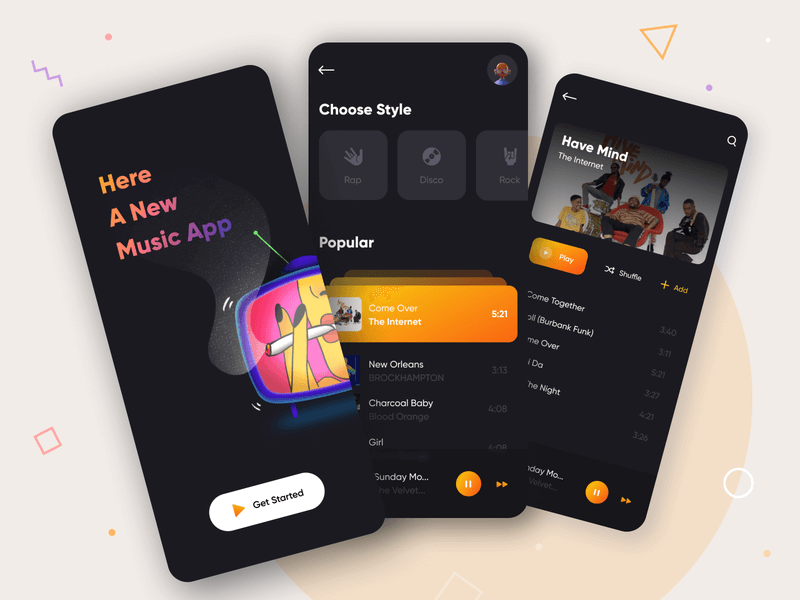
Wondering, how to build a music streaming website and how it works? Well, the process is pretty simple. These apps offer convenient access to their users allowing them to listen to their favorite music or tracks. As people lead a very busy life these days, they hardly have time to go through this entire list of available songs, sort them and make a playlist, and then begin listening. Rather what they prefer is simply open the app, and get to listen to their much-liked music or tracks with just a few taps. In the music streaming apps, the music available to stream can be easily customized as per the user’s likings and they just need to access the internet and immerse themselves into the music world.
In fact, the users are offered seamless connection on low bandwidth and this is one of the major reasons behind the ever-growing prominence of music apps.
Market Statistics Of Music Streaming Platforms & Apps
If the recent stats have anything to go by, from the year 2014-2020, the music apps revenue has crossed 500%. Not just this, but since the year 2019, the growth in terms of revenue is expected more than 100 billion USD on a year-to-year basis going up to the year 2023. This constant increase in the number of app users ensures recurring revenue for the music app business.
- The global music streaming market is anticipated to reach USD 103.07 billion by 2030. It is expected to grow at a CAGR of 14.7% from 2022 to 2030.
- In global comparison, the United States is expected to generate the highest revenue, amounting to US $10,200.00 million in 2023.
- Approximately 82 million Americans subscribe to on-demand music streaming services, with an average monthly payment of $10.
- In 2023, the revenue for the Music Streaming market is expected to reach a total of US$10.20 billion.
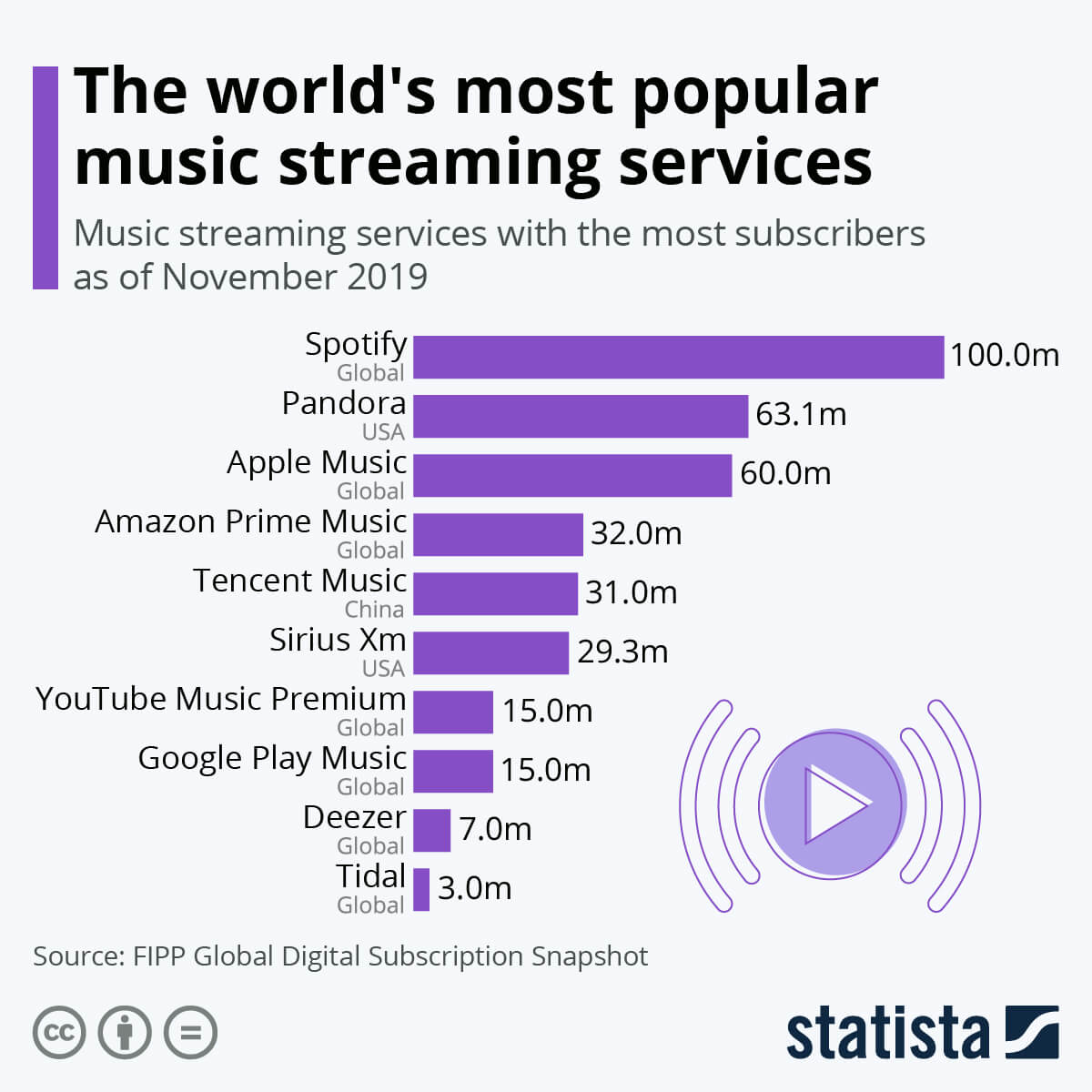
Benefits of Creating a Music Streaming App Like Spotify
In today’s digital age, music streaming apps have revolutionized the way we listen to and discover music. Whether you’re a music enthusiast or a business looking for new revenue streams, developing a music streaming app offers a multitude of benefits. Let’s explore the advantages for both customers and businesses.
Benefits for Customers
1. Access to a Vast Music Library:
Music streaming apps offer a vast library of songs and albums from different genres and time periods. You can easily explore new music or listen to your favorite tunes with just a few taps on your device.
2. Convenience and Mobility:
With a music streaming app, you can enjoy your favorite songs anytime and anywhere. You don’t need to carry around CDs or worry about storage space. Whether you’re at home, commuting, or traveling, you can effortlessly stream high-quality music on your phone or tablet.
3. Personalized Recommendations:
These apps use smart algorithms to analyze your music preferences and create personalized playlists for you. They also suggest new artists, songs, and genres based on your listening habits, allowing you to discover and explore music tailored to your taste.
4. Offline Listening:
Many streaming apps allow you to download songs for offline listening. This means you can enjoy your favorite tracks even without an internet connection. It’s perfect for situations like long flights, areas with poor connectivity, or when you have limited data availability.
5. Social Integration and Sharing:
Music streaming apps often have social features that let you share your favorite songs, playlists, and musical moments with friends. You can connect with other music enthusiasts and discover new music through social interactions, creating a sense of belonging and camaraderie.
Benefits for Businesses:
1. Broad User Base and Revenue Opportunities:
Creating a music streaming app can bring in a large number of users, both free and paying subscribers. As more people engage with the app and subscribe to premium plans, businesses can earn money through subscription fees, targeted advertisements, partnerships, and selling data. This opens up opportunities for growth and profitability.
2. Diverse Revenue Generation:
Music streaming apps offer various ways for businesses to make money. Users can pay for premium plans, which provide a steady income. Additionally, businesses can earn revenue through advertisements placed strategically within the app, where they get paid for every impression or click. Collaborations with artists, record labels, or sponsors can also generate revenue through sponsored content, playlists created by artists, and promotional events.
3. Collaborations with Artists and Labels:
Successful music streaming apps can partner with artists, record labels, and other industry players. These partnerships can lead to exclusive content releases, promotions for live events, artist-curated playlists, and other collaborations that benefit both parties. These alliances not only improve the app’s content but also establish strong connections within the music industry, strengthening its position in the market.
4. Data Analytics and Insights:
Music streaming apps gather valuable data on user behavior, popular genres, and trending songs. This data can provide insights into user preferences, market trends, and content curation strategies. By making informed decisions based on data analysis, businesses can better understand their audience, tailor their content and marketing, and improve the app.
5. Brand Exposure and Recognition:
Creating a music streaming app allows businesses to establish a strong brand presence in the music industry. Offering a seamless user experience with high-quality music, personalized recommendations, and user-friendly features helps enhance brand reputation and build customer loyalty. Positive user experiences and word-of-mouth recommendations also contribute to brand exposure, helping the app stand out in a competitive market and gain long-term recognition.

Monetization Opportunities For Music Streaming Services & Apps
There are many monetization opportunities available even if the app developed by you is available for free. However, mainly there are two major strategies to monetize music streaming app, i.e.:
- Advertisements: Music streaming apps generate revenue by displaying targeted advertisements to users. These ads can be audio or visual, providing a platform for brands to reach a wide audience while users enjoy free access to music.
- Subscription Model: Users pay a recurring fee to access premium features, such as ad-free listening, high-quality audio, and exclusive content. This model provides a consistent revenue stream for music streaming apps while offering a superior experience to paying subscribers.
- In-App Purchases: Apart from subscriptions, music streaming apps offer additional in-app purchases like merchandise, concert tickets, or exclusive content. These purchases enable users to deepen their connection with their favorite artists and provide an additional revenue stream for the app.
- Partnerships and Sponsorships: Music streaming apps form partnerships with artists, labels, and brands to promote exclusive content or featured playlists. By incorporating sponsored content or offering co-branded experiences, they generate revenue through sponsorship deals while providing added value to users.
- Make Yourself Socially Available: Music is already a vast industry, and to keep up, you should have a unique approach from others. Thus good presence in the market can help you in the process. You can go for mobile, smart TV, web apps, social media platforms, etc., which can help you curate content to maximum us
Popular Music Streaming Mobile Apps
There are a number of leading online music streaming platforms, but here we have discussed three of them.
1. Spotify
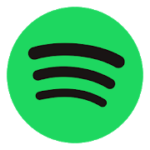
This app platform is available for free and by subscription. It is a leading app in the online music industry and is currently delivering content to its 100 million subscribers. It offers both music and desktop apps and has wide-ranging functionalities that enable the users to stream single tracks, as well as albums, and also create the customized playlists. On the free account, there is a “Shuffle Play” option and if you choose to switch to the $10 per month service, then you can listen offline and ad-free music and other content. There are also a few subscription pricing plans for the students and their families.
2. YouTube Music

This music app is available by subscription and it incorporates Google’s giant database. It is an amazing streaming music service offering multiple options which enhances the overall listening experience. This app allows its audience to search songs with the use of snippets of the lyrics and to easily switch the audio track to a video with just a tap. For the users looking for a great listening experience, this app completely serves the purpose with its fine audio quality. The users can access the Explore section where they get to explore new releases and find about the hot trends in music, despite the user is into recorded or live performances. This service costs $9.99/month.
3. Pandora
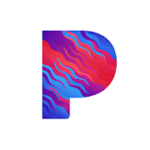
This app is available for free and by subscription. One of the leading players in the streaming industry, Pandora has around 76 million monthly users and enjoys a 70 percent share of the American internet radio market offering a personalized radio service. With the “For You” feature, in the app, the users are able to create playlists of new music & podcasts. Here the recommendations of music and tracks are based on the likes and dislikes of the users. For those preferring offline radio as well as listening to the individual tracks, the app offers Pandora Plus, which can easily be subscribed to for $5 a month. This app is available in the U.S, and its premium version costs $10 and allows to create shared playlists and listen to the app content without being interrupted by the advertisements.
4. Apple Music
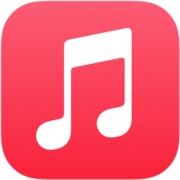
Apple Music is a popular music streaming service that lets you listen to a huge collection of songs in different styles. It has a simple and easy-to-use design and suggests new songs that you might like. It also has special content that you can only find on Apple Music, curated playlists made by experts, and live radio stations. Since it works smoothly with all Apple devices, you can listen to music without any interruptions.
5. Amazon Music
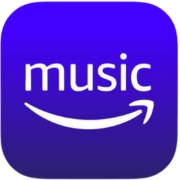
Amazon Music is a well-known music app that gives you access to a wide variety of songs from many different styles of music. It offers different options for how you can listen, including choices for listening with ads or without ads. With Amazon Music, you can create your own playlists, explore ready-made playlists, and get personalized recommendations for music. It also lets you download songs to listen to offline and works on different types of devices, which makes it a popular choice for people who love music.
Know Your Target Audience
For the success of any app, it is vital to understand the target audience and offer content as per their needs and preferences. After all, these are the people who would be using your app and getting you the big profits. Hence, having a minute understanding of them would be greatly helpful in the long run. As you look to get the app developed, first start by understanding the people who will use your app, so learn about their age, location, music preferences, and all the other information that is relevant. Like a major part of your user-base must come from a particular country, so consider providing them with the relevant local music recommendations and see how much these users would be keen to pay and accordingly decide on the pricing strategy for the additional features.
What Are The Different Types Of Music Streaming Services?
Most of the prominent online music streaming mobile apps are out there in a number of formats and they offer various listening options, however, the most popular music services are mentioned below:
1. Music Media Libraries
Apps like Amazon Music HD, Spotify, Apple Music, Pandora, SoundCloud, YouTube Music comes under this type of app. Here the users get unlimited song access with a monthly subscription payment basis. Hence, there would be no expenses on purchasing individual songs/albums/music. When the user opts for Amazon Music HD, they unlock up to 50 million files that can be streamed at 850 kbps. This would be twice more than the other services. Here the files can even be streamed in uncompressed, 24-bit lossless FLAC files.
2. Cloud Storage-Based Music Players
CloudPlayer, pCloud, AudioBox, Beat comes under this category of apps. Usually, the big platforms are known to offer cloud storage to organize and manage the media files. For instance, pCloud in particular is known to offer 10GB of free online storage and it enables its users to play the media files online and even has a locally encrypted secure option.
3. Radio Streaming Services
AccuRadio, iHeartRadio, SiriusXM are best known for this app category. The radio stations are known to focus on the automated search for music to be delivered to the users instantly as genre playlists, artist-centric lists, curated lists, and a lot more. In the iHeartRadio, they offer ad-free custom stations. Not just are they easy-to-use, but the app even offers an Offline feature available for the iOS & Android versions of the app. Meanwhile, the price differs for both the platforms, as to access iHeart All Access for the web & Google Play Store signup, the price is $9.99/month, whereas $12.99 for the iOS App Store signup.

Licensing Requirements For A Music Streaming App
This is one of the crucial factors of music streaming app development. It is vital before the development of a music streaming app to consider the laws applicable to offer music to the users. Like, for each of the music stream, the app owner would require compensating their legal owners. Not following licensing will end up being in legal trouble as the owner would certainly face copyright penalties.
Now, mainly a song has two copyrights. First is associated with the sound recording which the record label owns. Then, the second copyright is associated with composition, which includes lyrics and melody. This type of copyright is owned by publishing companies or songwriters. US-based users can contact organizations like BMI, ASCAP, SESAC.
For acquiring licensing for the sound recording, get in touch with the record labels to lock a deal. For indie music streaming, contact some of the digital rights agencies offering a license for the independent labels, like Merlin Network.
General Features of Music Streaming Mobile Apps
User Panel for Music Streaming Subscribers
- Register with Social Media or eMail
- Create a User profile
- Search & filter music style, album, artist, track name
- Search covers, music artists, albums & songs
- Listen radio streaming
- Add tracks on the personalized playlist
- Counter plays tracks
- Connect with smart speakers
- Background remote control
- Download audio tracks and listen offline
- Like & Share track and share on social media networks
- Create Private and public playlists
- Background music play
- Lockscreen info (artist, track, cover)
- in-app purchases(remove ad), add a playlist, access to offline music
Admin Panel For Music App Owners
- Secure login to the admin dashboard
- Manage and Upload tracks (mass upload)
- Create playlists based on artists, category, etc.
- Prelisten track
- Manage Users, music artists
- Publication of the track in one click
- Manage/Edit/Add track, album, style, artist
- Run advertising/promotions/discounts/offers
- Manage subscriptions & memberships
Advanced Features of Music Streaming Apps & Websites
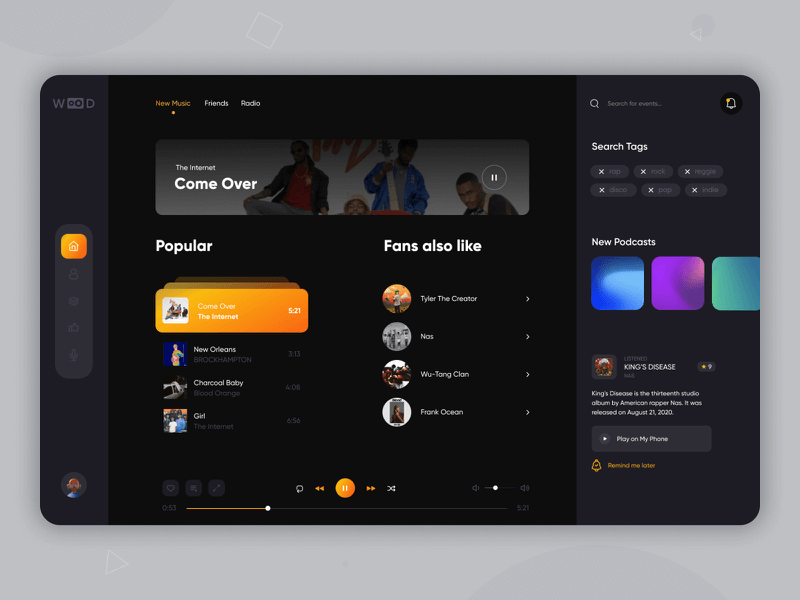
1. Social Media Signup/Login
The users can easily login or signup into the app without having to fill in the details while signing up, as well as each time they open the app to listen to the music.
2. User Profile
Upon registration, the users must have a profile that allows them to manage & update their playlists. At the same time, the functionality would allow them to not just share the tracks but even upload their own songs.
3. Search For Music Tracks & Playlists
Having this functionality allows the users to search and sort the music on basis of different artists, genres, years, and more. It should allow the users to easily navigate around the platform to search for their favorite tracks. In fact, the navigation is one area on which the app users can effectively work up to offer a better experience to their years, thus setting the app apart from the other apps in the same category. After all, users crave a smooth, speedy, and convenient experience where they can listen to their favorite songs with just a few taps. As a music app owner, you can also consider providing several customization options that help in creating and editing the playlists.
4. Share Music & Audio Playlists
The app can allow its users to follow other musicians, bands, and users, in this way they would be able to share tracks with a like-minded audience.
5. Push Notifications
This functionality can be useful for the app as it allows to inform users about new song releases, app updates, when available, and a lot more. This is a good way to ensure that everyone is aware of the happenings within the app.
6. Audio Streaming
By integrating special streaming software into the app, it allows converting audio into a streaming format to instantly deliver media to the listeners.
7. Music Library & Playlist
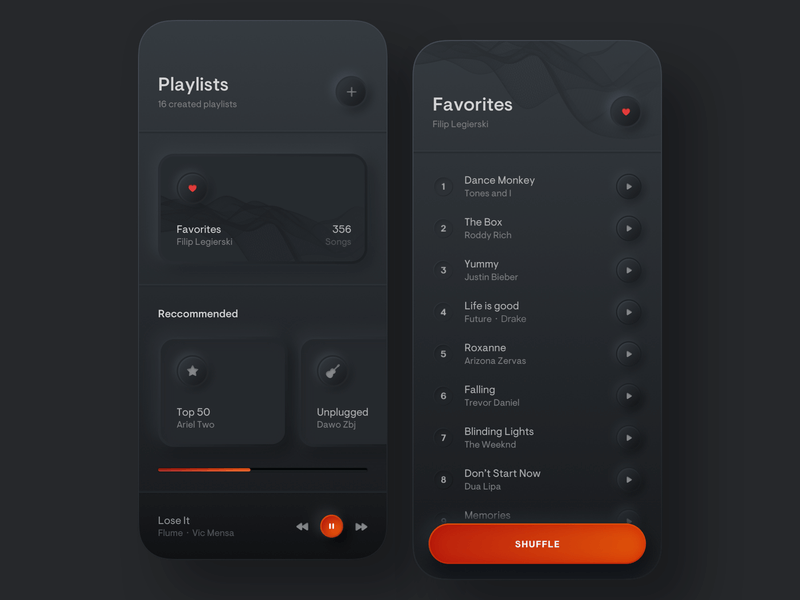
With the organization of the music and tracks into the digital libraries & playlist categories, app users can search for the media on the basis of artist, genre, and album.
8. Offline Access To Audio Tracks
The music lovers definitely love being able to listen to the downloaded media even when they are offline. This paves way for customer loyalty and allows the users to feel connected with the brand.
9. Recommendation For Music To Listen
When the app shows recommendations as per the users’ choices, this adds to their connection with the app. After all, nothing can be better than offering a great app experience for app success.
10. Social Sharing
Integrating this feature into the app will allow the users to share their created playlists with their friends and contacts via social networking platforms. This can be path-breaking in audience engagement and grabbing the attention of other music lovers.
11. Uploading Media
Just a few taps to easily upload files (irrespective of the number of songs a single file containing) across any device. This will offer a seamless listening experience to the users.

Step-By-Step Guide for Creating a Music Streaming App
Developing a music streaming app involves several important steps that need to be followed. Here is a general overview of the development process:
- Idea and Planning: The first step is to define the purpose and features of your music streaming app. It’s crucial to conduct market research to understand your target audience, identify competitors, and determine unique selling points. Creating a detailed plan that outlines the app’s functionality, user interface, and technology requirements is essential.
- Design & Wireframing: Once the idea and plan are in place, the next step is to develop the visual design and user interface (UI) of the app. Designers create wireframes or mockups that showcase the app’s layout, navigation, and interactions. The focus is on creating an intuitive and visually appealing design with a strong emphasis on usability.
- Backend Development: The backend development involves setting up the server infrastructure and database for the app. It includes implementing user authentication and authorization mechanisms for secure access. Core functionalities like user management, music catalog management, and playlist management are developed. Integration of APIs for features like music metadata, user authentication (e.g., OAuth), and payment processing (if applicable) also takes place.
- Frontend Development: The frontend development involves building the client-side of the app using appropriate frameworks or platform-specific technologies. React Native can be used for cross-platform development, while technologies like Swift for iOS or Kotlin for Android are platform-specific options. The focus here is on implementing UI components, navigation, and user interactions based on the design specifications. Integration with backend services is done to fetch data and handle user actions.
- Secure Licensing Agreements: Obtain licenses from record labels, publishers, and artists to legally stream their music on your platform. This step is crucial to avoid copyright infringement issues.
- Music Catalog and Streaming: To offer a comprehensive music streaming experience, a robust music catalog needs to be incorporated into the app. Depending on licensing agreements, working with music labels, and publishers, or utilizing music streaming APIs like Spotify or Apple Music may be required. Implementing features like search, browse, recommendations, playlists, and offline playback is crucial for a complete music streaming experience.
- Testing and Quality Assurance: Thorough testing is conducted to ensure that the app functions correctly, is stable, and provides a seamless user experience. This involves performing unit testing, integration testing, and user acceptance testing (UAT). Bugs are identified and fixed, performance is optimized, and compatibility across different devices and operating systems is ensured.
- launch the app: The app is prepared for deployment by generating necessary certificates, signing the code, and creating release builds. It is then submitted to the relevant app stores, such as the Apple App Store or Google Play Store, for review and approval. Once approved, the app becomes available for users to download.
- Maintenance and Updates: After the app is launched, ongoing maintenance is crucial. User feedback, bug reports, and performance issues need to be addressed promptly. Regular updates are planned to introduce new features, improve functionality, and meet evolving platform requirements.
It’s important to note that the development process can vary based on specific requirements, technologies used, and team size. Having a clear roadmap, effective collaboration between designers and developers, and prioritizing user experience throughout the process are key factors for success.
Required Team Structure To Build A Music Streaming Platform like Spotify
Once the research process is done and you know what you really need from the app and after acquiring the necessary licenses, it is then time, to begin with, the development work of your on-demand music streaming app. And this requires you to look for a good app development firm. Execute research to find a reputed company known for delivering successful app projects, and then hold meetings with them to learn about their skills, expertise, and past experience.
In order to get an app built for iOS and Android platforms, it is important to hire an experienced team. Usually, the app development team should consist of:
- Project Manager
- A team of Android developers
- A team of iOS Developers
- Back-end Developer
- UX/UI Designers
- Quality Analysis (QA) Experts
Technology Stack Needed For Music Streaming App

- For Backend Development: Python
- For Frontend Development: JavaScript
- Frameworks: Hadoop, Apache Storm, Hub Framework
- For Music files storage: in device cache using Cassandra/PostgreSQL
- For Server-side and back-end structure: PHP and Java
- For Real-time data management and processing: Kafka software
- For model-based tests and Python integration: GraphWalker
- For platform infrastructure: Dataproc
- For cloud-based music streaming: Amazon S3, Google BigQuery
- For building UI for the desktop application: Chromium embedded framework
- Open-source HTTP and proxy server: Nginx
- For web development: Bootstrap
- For Android Music Streaming App: Java
- For IoS Music Streaming App: Objective-C
- For Windows/Mac clients: C++
- Third-Party Libraries for stream management and audio playback: Spotify Player SDK
- For Utilities: Google Analytics, Twilio SendGrid
- For Business Tools: G Suite
and more such as jQuery, Retrofit, Datastax, Fresco, Crashlytics, Realm Silex, MySQL, Composer HTML5, CSS3, Twitter Bootstrap, Bower, Less, etc.
Cost For Creating A Music Streaming Service & App
There are a number of factors on which the app development cost of a music streaming app depends on and here we have discussed a few of them, such as:
Hourly Rates of App Development Firm
The cost of an app is determined by the number of hours spent on its development. However, the hourly rates of the app development process differ from country to country. Usually, the hourly rate for app development is higher in the countries of the USA, Europe, whereas a lot less in India. Hence, if an app owner chooses an Indian app development firm, the app can be developed at affordable rates.
Platforms & Devices
This is again an important factor on which the app development cost would depend on. To create an app for a single platform would cost less, while to create it for multiple platforms (for instance both iOS and Android) would double the cost of app development. If the app is developed for two separate platforms then two separate teams would be required to be hired and this would increase the cost of the development procedure.
Features & Functionalities
When the app is built with basic features without the integration of the third-party APIs, the cost would be comparatively lesser when an app is developed with advanced features and third-party APIs are integrated.
UX/UI Design
An app designing process goes through several stages like prototyping, wireframing, testing, and development. When the app has a complex design structure, it costs more to develop, while the app with a simple design, costs less to develop.
Backend Integration & Testing
Again a major factor to affect the app cost. When the app is integrated with third-party service for better performance and functionalities, it increases the app development cost. Also, the app testing by the Quality Analysts experts to find bugs and errors also affects the app development cost.
Maintenance
Even after the app has been developed, it needs constant revisions, bug-fixing, enhancements, version updates, code optimization, and for this separate budget needs to be kept side, which is usually one-fifth of the app’s original development price.
All in all, to develop an app for a single platform with the basic features, should cost somewhere around $25000-$35000, whereas an app with advanced features, third-party APIs integrated and for more number of platforms and devices should cost between $50000-60000.
How Can Emizentech Help You in Music Streaming App Development?

A leading app development company holding the required expertise and experience will help you accomplish your music streaming app development project. And you need to know that Emizentech is one of those.
Yes, Emizentech, with a team of skilled mobile developers, helps worldwide clients build mobile applications for varied industry verticals.
The team of developers here has been making software solutions for the streaming sector for years. They have developed various scalable Android and iOS apps of distinctive complexity levels.
Key Highlights of Emizentech
- Awarded by Clutch
- Partnered with Various Top E-commerce and other Platforms
- Teams of experts
- Hold a Decade of Experience
Wrapping Up
To conclude, with the development of a music streaming mobile app one can say that there is a lot of potential in this app idea. You could launch your own on-demand music streaming service app and capture a large market share with the aid of an experienced app development company and a good marketing strategy.

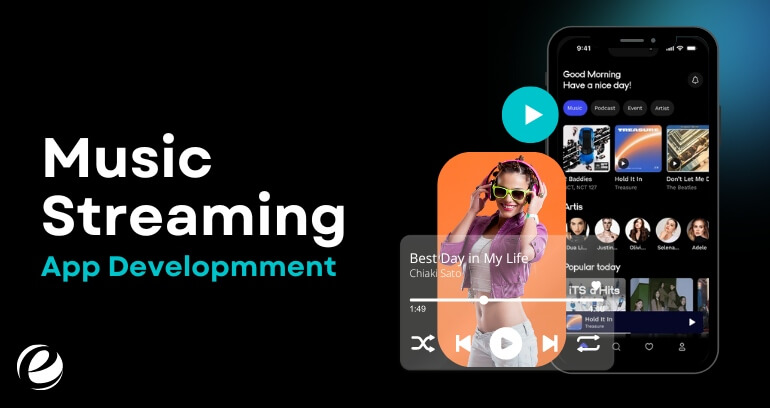
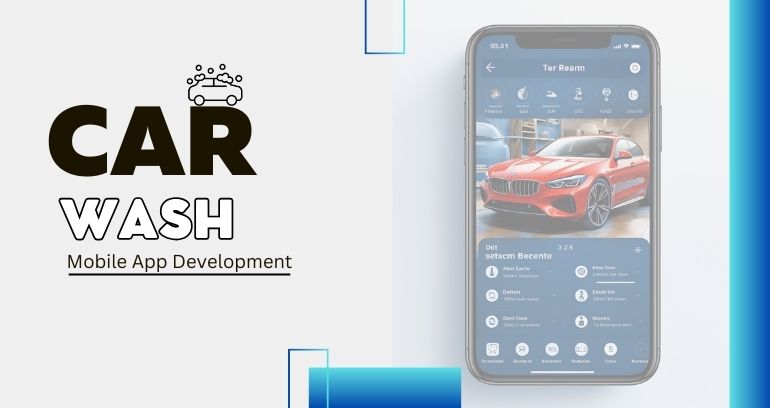
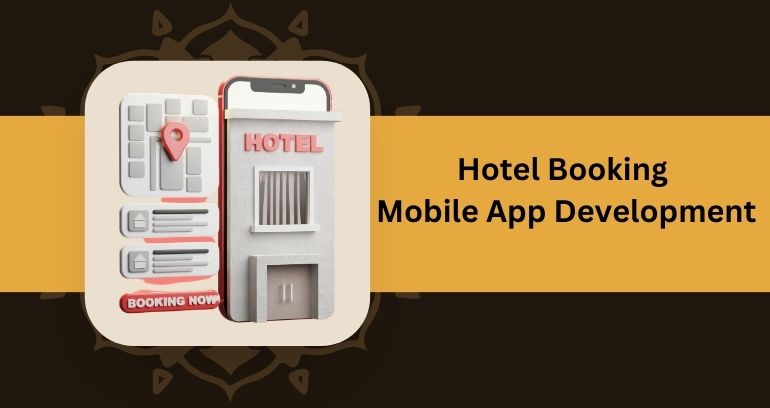
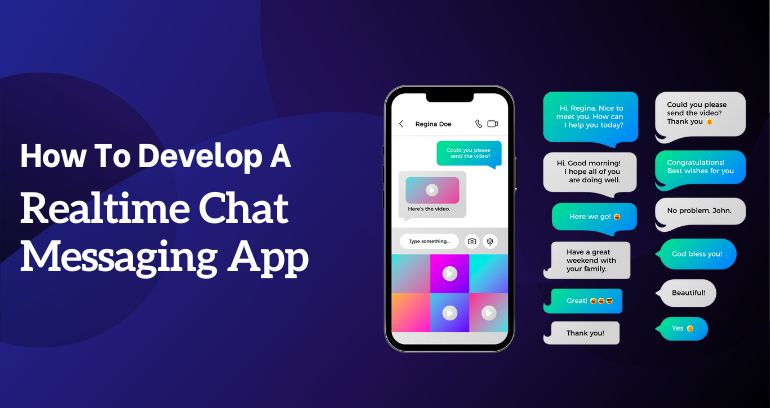
 USA
USA UK
UK